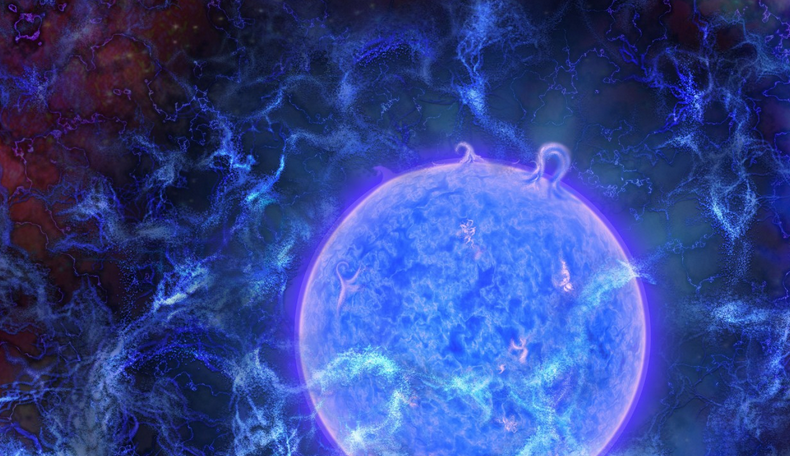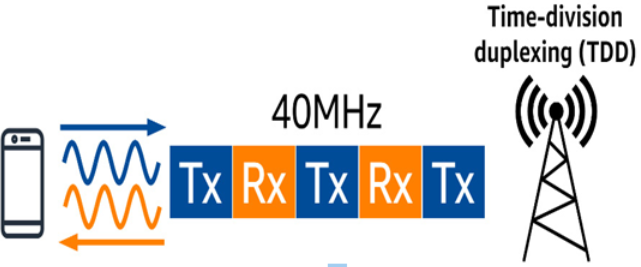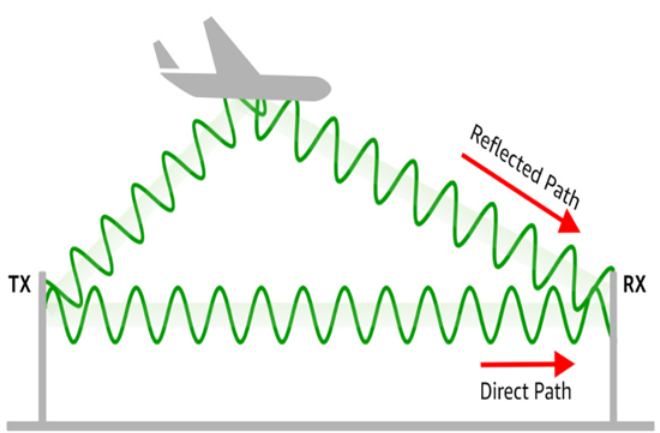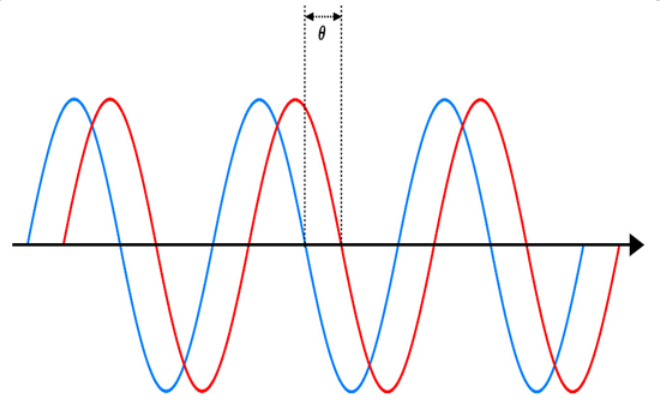
TIME-DIVISION DUPLEXING (TDD) – Understanding Network and Security for Far-Edge Computing
TDD is a half-duplex technique that simulates full-duplex by switching between uplink and downlink phases on the same frequency at regular intervals:

Figure 3.12 – TDD
The main advantage TDD has is that it halves the frequency range required versus FDD. However, it brings a couple of disadvantages with it. It requires precise time synchronization on both ends – on the order of milliseconds. This increases cost and complexity.
For voice calls or low-throughput data streams such as SMS, simple TDD was fine for a long time. Eventually, however, users started doing things such as video streaming to their mobile devices. People in the industry started eyeballing the bandwidth that was being wasted by a straight 50/50 approach.
Dynamic time-division duplexing (D-TDD)
D-TDD is a half-duplex approach that utilizes the same principles as static TDD while adding a mechanism that adjusts how often downlink and uplink phases occur. This is achieved through the use of a special control message often called a Slot-Format Indicator (SFI). This sets the schedule, so to speak, of the next 14 phases. The arrangement of upload and download phases can be skewed in either direction dynamically based on the needs of the system at that moment in time.
In the following figure, each slot is broken into 14 symbols, and each symbol can be of the uplink, downlink, or flexible type. The arrangement of these symbols is governed by the SFI on the left. The SFI that the stations should use can be exchanged using any number of control-channel mechanisms. The specifics of this exchange depend on the technology in question:

Figure 3.13 – D-TDD
It isn’t perfect, but on average, it reduces the wastefulness of static TDD by about 75%. The most obvious disadvantage is complexity – which leads to increased costs for both the hardware and ongoing management.
Multipath propagation
This is a classic problem that’s faced by electromagnetic-based technologies of all types. It refers to when the same signal sent by the transmitter is received on the other end via two or more paths. This can be caused by the electromagnetic waves being reflected off man-made objects such as buildings and airplanes, as well as by mountains or activity within the atmosphere itself:

Figure 3.14 – Secondary transmission path created by reflection
This is a problem because those two paths are of different lengths. That means the radio waves will arrive offset from each other. This is also known as being out of phase:

Figure 3.15 – The same signal from different paths will be phase-shifted
This is particularly problematic for technologies such as GNSS, where precision timing of signal arrival is a fundamental assumption.
You may also like
Archives
- August 2024
- July 2024
- June 2024
- May 2024
- April 2024
- March 2024
- February 2024
- January 2024
- December 2023
- November 2023
- October 2023
- September 2023
- August 2023
- July 2023
- May 2023
- April 2023
- February 2023
- January 2023
- November 2022
- October 2022
- September 2022
- August 2022
- July 2022
- June 2022
- May 2022
- April 2022
- December 2021
- November 2021
- October 2021
- September 2021
- June 2021
Calendar
| M | T | W | T | F | S | S |
|---|---|---|---|---|---|---|
| 1 | 2 | |||||
| 3 | 4 | 5 | 6 | 7 | 8 | 9 |
| 10 | 11 | 12 | 13 | 14 | 15 | 16 |
| 17 | 18 | 19 | 20 | 21 | 22 | 23 |
| 24 | 25 | 26 | 27 | 28 | 29 | 30 |
| 31 | ||||||
Leave a Reply